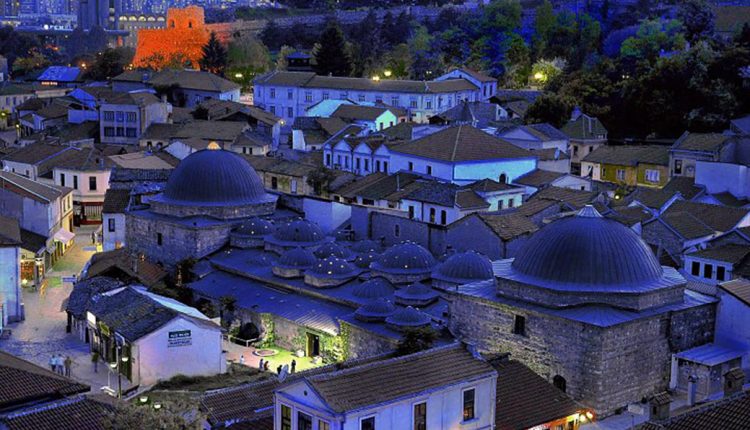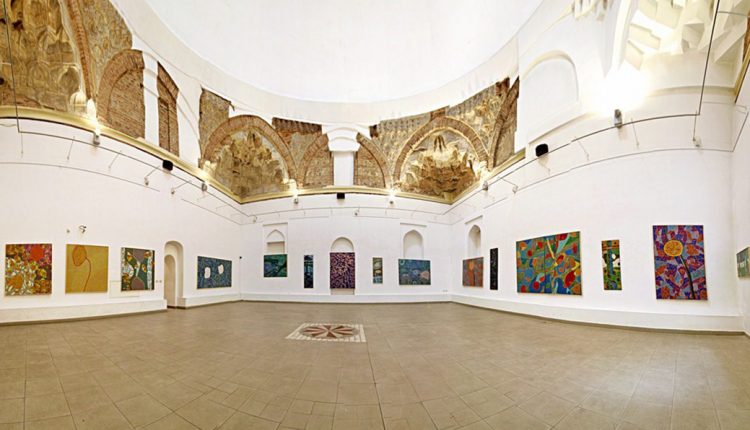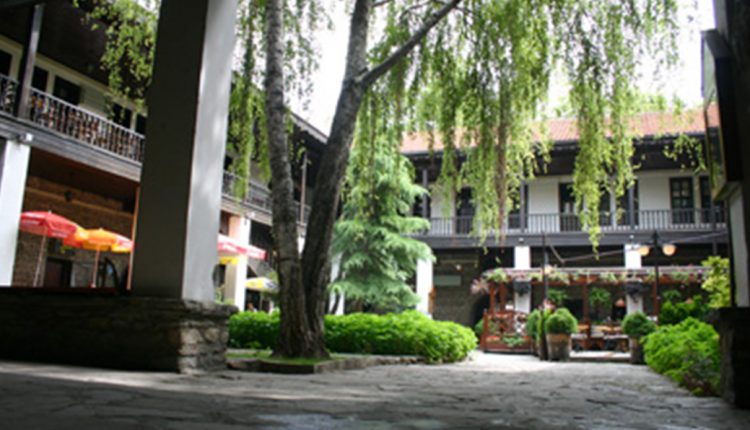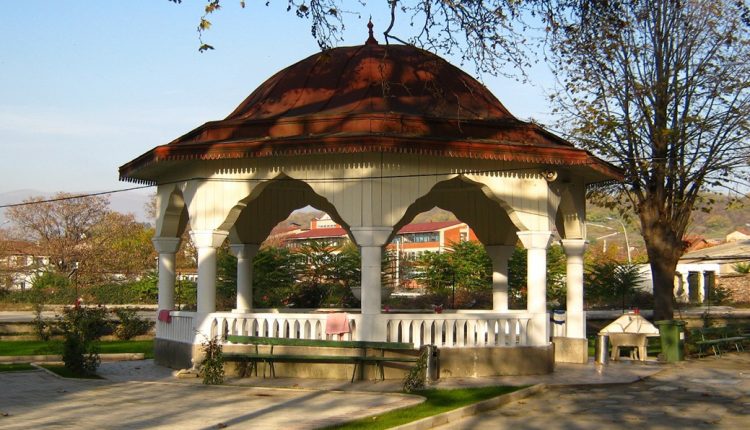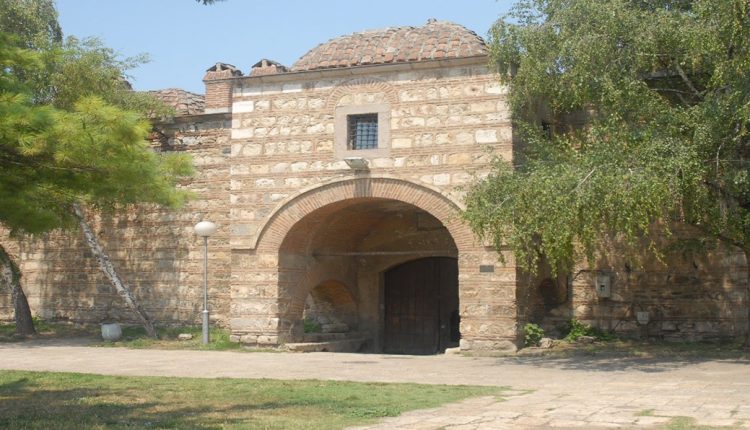The Old Bazaar in Skopje is the largest bazaar in the Balkans outside of Istanbul. The Old Bazaar falls within the borders of municipality of Chair and is a protected national landmark. The earliest known documented sources that point out to the existence of a merchant quarter on the bazaar’s territory date back to the 12th century. During the Ottoman rule with the city, the place underwent a rapid development to become city’s main economic and merchant centre, evidenced by about 30 mosques, numerous caravanserais and Hans, as well as other Ottoman buildings and monuments and nowadays represents the only remaining cultural monument in the Republic of Macedonia, which has kept its multicultural heritage of different civilizations. The Ottoman architecture is predominant in the Old Bazaar, although remains of the Byzantine architecture are evident as well, while the most recent reconstructions lead to the application of elements specific to the Modern architecture. Most of the buildings that once were used to host the travelers or as hamams the political dignitaries were transformed into museums and galleries, which today are used with the main purpose to host art exhibitions, concerts and other cultural events. Nowadays, however, the place and its proximity are still home to several mosques, türbes, two churches and a clock tower that together with the buildings of the Museum of Macedonia and the Museum of Modern Art forms the core of the modern bazaar.
Old Bazaar in Skopje
TRADITIONAL CRAFTS OF THE SKOPJE OLD BAZAAR
Trade of old artisans – Occurrence of the the Old Bazaar according to written information and notes of the famous itinerary writers followed since the middle Ages. It was located in the central area of the city and yet remains even today, as an attractive destination with the expansion of the city on the right bank of the river Vardar in the period between the two world wars. The Old Bazaar with all its beauty and its various opportunities enables the development of more trades. Many of the crafts that took a place in the Old Bazaar were highly developed and widely known. Best example this was the workmanship of the leather, wool, wax, tobacco, gold thread, silk thread embroidery products broadcloth and so far. But in the late 19th century craftsmanship began a phase of stagnation due to the penetration of European capital and cheap industrial products that were offered on the market. During this period began to die off many of the traditional crafts associated with shoemaker craft wooden arts, copper arts, tailors, etc. Their place occupied new crafts that emerge such as hatter maker, tapestry craft, female tailoring, and many others. During this period, a lot of traditional crafts associated with handicraft shoemaking or lampshade-making and many others, began to decrease and slowly to come to an extinct. They got replaced by the new crafts which were blooming with time. However, not even for a moment, the great-old-masters of Skopje were never forgotten. The lampshade-making craft was practiced by both Muslims and Christians as well. Menswear was made by “aba”, which was later carried in villages and cities. In 1925 there were existing only 8 lampshade-craft shops. However with the gradual rise of the city’s modern clothes,lampmaker-craft shops began to decline and eventually they fade out. At that time, the tea shops or eating-houses were remarkably rising, and they could be found only inside the old bazaar. They served food and drinks. Of course we must not neglect the load of hot air bozadzhiskite stores that were 21 in number and this craft usually dealt Muslims. Of course the pasta and the boza-maker shops should not be left out. They were 21 in total and this kind of craft has been practiced by Muslims. There have also been workshops for the alcoholic beverages that were 6 in total. The most famous of all the workshops were those of Kalajdzievi’s family. Jorgan-maker shops or so-called Jorgandziite, had their bazaar where they made them. This craft began to flourish after the city began to use beds for sleeping. They had their own guild stamp and a fully elaborated workshop. In 1928 there were a total of 10 workshops. Just like these kind of shops there were also shops named as “kazandzhiite”and they even had their own “Kazandziski Bazaar”. There they produced vessels for eating and drinking, and many other vessels made of cupper. This craft existed until the uptake of porcelain tableware. Blacksmith craft is one of the oldest crafts. This craft was mostly practiced in Roma. In 1925 in Skopje there were 37 blacksmith workshops and then later on in 1928 there were a total of 9 blacksmith, 9 Collard-forging and 6 workshops in total. “Kujundzhiskiot – Silversmith” craft was also called as goldsmith craft as well and still today remains as one of the most modern crafts in Old Bazaar They also manufactured jewelry, crosses made of silver and gold for the curches and monasteries. They also made lamps and a huge number of different varieties of jewelry such as rings, bracelets, earrings, necklaces and so on. Furrier craft (leather-making craft) was one of the most developed crafts at the time. Craft-guild organizations worked with its best. Their bazaar was located in Kurci An. They manufactured the leather by themselves. They bought lambs, sheep and skins and then prepared them to pieces and sheepskin for the villagers. In 1925 in Skopje there were only 27stores of this kind, and in 1928 there were left only seven of them. They were also making products for markets or by order. They were organized into “opincharski” guilds that also had its own seal. In 1928 there were only 7 stores. We must not forget to mention the fact that saddle-maker people were one of the main artisans in the old Macedonian stories. They made saddles, reins, belts, straps, saddlebags and more. However this craft was mainly practiced by Turkish people. These shops gradually declined and in 1925 there were only 22 stores, and in 1928 that number reduced to 12. Clock-making craft as being one of the most widespread trades in the period between the two world wars, was very prevalent. Masters of this craft were highly respected due to the fact though they practiced with making watches, they also offered repairing. Besides the repairing and sale of watches, among them they were also selling products of kind called “Juvelirski”. The emergence of the craft of photography coincides with the invention of photography itself. Between the two world wars craft of photography in Skopje experienced real expansion. There were 7 photographic studios and 3 stores for photo material. An outbreak was made when the invention of a new craft, photography making first occurred in Skopje. This was in the period between the two world wars and the city suffered great expansion. Back at the time, there were existing 7 photographic studios and 3 stores for photo-material. Candle making craft, only engaged in making and selling candles. In 1925 there were 10 stores that were producing wax candles but then in 1928 there were only five candle making and manufacturing workshops. In the period between the two world wars, craft associations had around 1485 number of craftsmen working there. The undertaking of the industrial goods led to a total collapse for the craftsmen. It was obvious that after this, there were rare cases when a craftman was able to maintain and to move into different ranks of the bourgeoisie. Their impoverishment started to appear in large steps in the daily mass. One of the oldest blacksmith in the Old bazaar told us that nowadays this craft it is mostly getting worse instead of progressing, since there is no one interested to surrender himself completely to the craft that he’s practicing with. As a result of this, it was concluded that nowadays the youth goes mostly for the modern professions in step with time.


